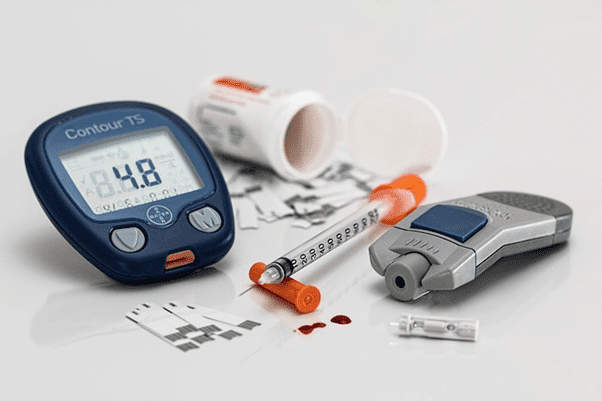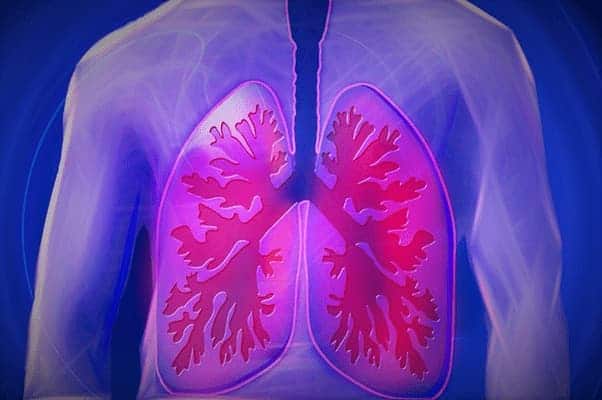Introduction
Chronic diseases, including hypertension, obesity, congestive heart failure (CHF), and chronic obstructive pulmonary disease (COPD), are among the leading causes of morbidity and mortality in the United States. The prevalence of these conditions has increased over the years, putting a significant strain on the healthcare system and negatively impacting the quality of life for millions of Americans. As the burden of chronic disease continues to rise, it becomes crucial to implement effective management strategies tailored to the unique needs of each patient.
In this section, we will explore various approaches to managing these five common chronic diseases. We will delve into the prevalence and impact of these conditions, discuss common comorbidities and risk factors, and examine the health outcomes and economic burden associated with chronic diseases. Additionally, we will outline evidence-based management strategies for each condition, focusing on lifestyle modifications, medication options, and the importance of self-management and collaboration between patients and healthcare providers.
The ultimate goal of chronic disease management is to improve patient outcomes, reduce healthcare costs, and enhance the overall quality of life for those affected by these conditions. By understanding the principles of effective management and implementing evidence-based strategies, healthcare providers can help their patients achieve better health outcomes and a greater sense of well-being.

Prevalence and Impact of Chronic Diseases
Chronic diseases have a profound impact on the health of the American population. According to the Centers for Disease Control and Prevention (CDC), six in ten adults in the United States have at least one chronic condition, while four in ten have two or more. The five chronic diseases discussed in this section—hypertension, obesity, CHF, and COPD—are particularly prevalent and contribute significantly to the nation’s morbidity and mortality.
Hypertension, or high blood pressure, affects nearly half of all adults in the United States. It is a major risk factor for heart disease and stroke, two of the leading causes of death in the country. Diabetes, a condition characterized by elevated blood sugar levels, is another common chronic disease, affecting approximately 37.3 million Americans or 11.3% of the population. Obesity, which increases the risk of numerous health problems, including heart disease, stroke, and type 2 diabetes, has reached epidemic proportions, with more than 42% of adults in the United States considered obese.
Congestive heart failure (CHF) is cardiovascular disease that affects an estimated 6.2 million Americans, with over 960,000 new cases diagnosed annually. This condition occurs when the heart cannot pump blood efficiently, leading to fluid accumulation in the body and various health complications. Lastly, chronic obstructive pulmonary disease (COPD) is a group of progressive lung diseases that affect around 16 million Americans, making it the fourth leading cause of death in the United States.
The high prevalence of these chronic diseases not only affects the health and well-being of the individuals living with them but also places a considerable burden on the healthcare system. As the number of people with chronic diseases continues to rise, it is essential to address the factors contributing to their development and implement effective strategies to manage and prevent these conditions.
Common Comorbidities and Risk Factors

Chronic diseases often coexist and share common risk factors, complicating their management and contributing to poorer health outcomes. Comorbidities, or the presence of multiple chronic conditions in a single individual, are common among those with hypertension, diabetes, obesity, CHF, and COPD. For example, hypertension often coexists with diabetes, and both conditions are frequently observed in individuals with obesity. Similarly, CHF and COPD are often seen together, as both diseases share risk factors such as smoking and age.
Several risk factors contribute to the development and progression of chronic diseases. Some of these risk factors, such as age, sex, and genetics, are non-modifiable, meaning they cannot be changed. However, many risk factors are modifiable, meaning individuals can take steps to reduce their own major risk factors through lifestyle changes. Some of the most common modifiable risk factors include tobacco use, unhealthy diet, physical inactivity, and excessive alcohol consumption.
Tobacco use, in particular, is a major risk factor for chronic diseases, including heart disease, stroke, and COPD. An unhealthy diet, characterized by high consumption of processed foods, refined sugars, and unhealthy fats, can contribute to obesity, hypertension, and diabetes. Physical inactivity increases the risk of obesity, heart disease, and type 2 diabetes, while excessive alcohol consumption has been linked to hypertension, heart disease, and liver disease.
Addressing these modifiable risk factors is essential for preventing and managing chronic diseases. By adopting healthier lifestyles, individuals can reduce their risk of developing these conditions, improve their health outcomes, and enhance their overall quality of life.
Health Outcomes and Economic Burden

The health outcomes of individuals living with chronic diseases can be significantly impacted, leading to reduced quality of life, increased disability, and higher risk of mortality. For instance, uncontrolled hypertension can result in heart attack, stroke, or kidney failure. Similarly, poorly managed diabetes can lead to complications such as kidney disease, nerve damage, and vision loss. Patients with CHF and COPD are at increased risk of hospitalization, disability, and death due to the progressive nature of these conditions.
The economic burden of chronic diseases on the US healthcare system is substantial. According to the CDC, 90% of the nation’s $4.1 trillion annual healthcare expenditures are attributed to chronic diseases and mental health conditions. These costs encompass direct medical expenses, such as hospitalizations, medications, and outpatient care, as well as indirect costs, including lost productivity and wages due to disability or premature death.
Hypertension alone is estimated to cost the United States over $131 billion annually in direct medical expenses. Diabetes imposes a financial burden of approximately $327 billion per year, including $237 billion in direct medical costs and $90 billion in reduced productivity. The annual cost of obesity-related healthcare expenditures is estimated at $147 billion, while the combined direct and indirect costs of CHF and COPD are estimated at $30.7 billion and $50 billion, respectively.
Effective management of chronic diseases can help reduce the economic burden on the healthcare system and improve health outcomes for those affected. By addressing modifiable risk factors, promoting self-management, and fostering collaboration between patients and healthcare providers, the impact of chronic diseases on individuals and the healthcare system can be mitigated.
Management Strategies for Chronic Diseases
Effective management of chronic diseases involves a multifaceted approach, encompassing lifestyle modifications, medication adherence, regular monitoring, self-management, and collaboration between patients and healthcare providers. Addressing these aspects can significantly improve health outcomes and reduce the burden on the healthcare system.
Lifestyle modifications are crucial in managing chronic diseases, as they can reduce risk factors and alleviate symptoms. For example, adopting a healthy diet, engaging in regular physical activity, and quitting smoking can improve blood pressure control in hypertension, glycemic control in diabetes, and reduce exacerbations in COPD. Additionally, weight management plays an essential role in managing obesity and its related comorbidities.
Medication adherence is another key aspect of chronic disease management. Patients should work closely with their healthcare providers to ensure they are taking medications as prescribed and to discuss any concerns or side effects. Regular monitoring is also critical, as it allows for early detection of complications and timely adjustments to treatment plans.
Self-management is an empowering tool that encourages patients to take an active role in managing their chronic conditions. This may involve setting personal goals, developing problem-solving skills, and learning to cope with the emotional and psychological aspects of living with a chronic illness.
Collaboration between patients and healthcare providers is essential for effective chronic disease management. This partnership allows for open communication, shared decision-making, and coordinated care, ensuring that patients receive the support they need to manage their conditions.
In summary, a comprehensive approach to chronic disease management that incorporates lifestyle modifications, medication adherence, regular monitoring, self-management, and collaboration with healthcare providers is vital to improving health outcomes and reducing the burden of chronic diseases on individuals and the healthcare system.
Hypertension Management

Hypertension, also known as high blood pressure, affects nearly half of the adult population in the United States. Managing hypertension is crucial to prevent complications such as heart disease, stroke, and kidney failure. Effective management involves understanding the causes and risk factors, implementing lifestyle modifications, adhering to medication regimens, and regularly monitoring blood pressure.
Causes and Risk Factors for Hypertension
Hypertension can be classified into two types: primary and secondary. Primary hypertension, which accounts for about 90-95% of cases, has no identifiable cause but is linked to several risk factors. These include age, family history, race, obesity, physical inactivity, tobacco use, high sodium intake, low potassium intake, and excessive alcohol consumption. Secondary hypertension, on the other hand, is caused by underlying conditions such as kidney disease, hormonal disorders, or certain medications.
Lifestyle Modifications, Medication Options, and Regular Blood Pressure Monitoring
Lifestyle modifications are the cornerstone of hypertension management. Patients should adopt a heart-healthy diet, like the DASH diet, which is rich in fruits, vegetables, whole grains, and low-fat dairy products. Reducing sodium intake, engaging in regular physical activity, maintaining a healthy weight, limiting alcohol consumption, and quitting smoking are also essential steps.
In addition to lifestyle changes, many individuals require medications to control their blood pressure. Healthcare providers may prescribe various classes of antihypertensive drugs, such as diuretics, ACE inhibitors, calcium channel blockers, and beta-blockers. The choice of medication depends on the patient’s specific needs and any existing comorbidities.
Regular blood pressure monitoring is vital to assess the effectiveness of treatment and make necessary adjustments. Patients should work closely with their doctor and their healthcare providers to ensure they are on the appropriate treatment plan and understand how to monitor their blood pressure at home.
Diabetes Management
Diabetes, a chronic condition characterized by high blood sugar levels, affects millions of people in the United States. The primary types of diabetes are type 1, type 2, and gestational diabetes. Proper management of diabetes is critical to prevent complications such as heart disease, kidney failure, blindness, and neuropathy.
Blood Sugar Monitoring and Medication Management
Monitoring blood sugar levels is a crucial aspect of diabetes management. Regular self-monitoring allows patients and healthcare providers to assess the effectiveness of treatment plans and make adjustments as needed. Blood glucose meters, continuous glucose monitors (CGMs), and insulin pumps are some of the tools available to help monitor and manage blood sugar levels.
Medications play a significant role in diabetes management, especially for individuals with type 2 diabetes. Some commonly prescribed medications include metformin, sulfonylureas, DPP-4 inhibitors, and GLP-1 receptor agonists. Insulin therapy is essential for type 1 diabetes and may also be required for some individuals with type 2 diabetes. The choice of medication depends on the patient’s specific needs and any existing comorbidities.
Lifestyle Modifications
Lifestyle modifications are vital in managing diabetes and preventing complications. A balanced diet, rich in fruits, vegetables, whole grains, lean protein, and healthy fats, can help maintain blood sugar levels within the target range. Carbohydrate counting and portion control are essential skills for people with diabetes to master.
Regular physical activity is also crucial, as it can improve insulin sensitivity and help control blood sugar levels. Patients should aim for at least 150 minutes of moderate-intensity aerobic exercise each week. It is essential to consult with a healthcare provider before starting a new exercise regimen, especially for individuals with pre-existing health conditions.
Obesity Management

Obesity is a major public health concern, as it increases the risk of various chronic conditions, including hypertension, diabetes, heart disease, and certain cancers. Effective management strategies for obesity include lifestyle changes and medical interventions, depending on the individual’s needs and severity of the condition.
Lifestyle Changes
Lifestyle modifications are the cornerstone of obesity management. A healthy diet focusing on portion control, balanced meals, and nutrient-dense foods is essential for weight loss and maintenance. The USDA’s MyPlate guidelines can help individuals make healthier food choices.
Physical activity is another critical component of obesity management. The CDC recommends at least 150 minutes of moderate-intensity aerobic exercise or 75 minutes of vigorous-intensity aerobic exercise per week, along with muscle-strengthening activities on two or more days a week.
Behavioral modifications, such as setting realistic weight loss goals, self-monitoring, and seeking social support, can also facilitate lasting lifestyle changes. Working with a registered dietitian or a certified health coach can provide additional guidance and support.
Medical Interventions
In some cases, lifestyle modifications alone may not be sufficient for weight loss, and medical interventions may be necessary. Prescription weight loss medications, such as orlistat, liraglutide, and phentermine-topiramate, can be used as an adjunct to diet and exercise for individuals with a BMI of 30 or greater or a BMI of 27 or greater with weight-related comorbidities.
Bariatric surgery, including gastric bypass, sleeve gastrectomy, and adjustable gastric banding, can be a highly effective treatment option for individuals with severe obesity who have not achieved significant weight loss through non-surgical methods. These procedures are typically considered for patients with a BMI of 40 or greater, or a BMI of 35 or greater with obesity-related health conditions.
Congestive Heart Failure (CHF) Management

Congestive heart failure (CHF) is a progressive condition where the heart is unable to pump blood efficiently, leading to fluid buildup in the lungs and other parts of the body. CHF management involves medications, lifestyle changes, and medical procedures tailored to the individual’s needs and the severity of the condition.
Medications and Lifestyle Changes
Medications play a key role in managing CHF. Commonly prescribed drugs include angiotensin-converting enzyme (ACE) inhibitors, angiotensin II receptor blockers (ARBs), beta-blockers, diuretics, and aldosterone antagonists. These medications help to reduce symptoms, prevent hospitalizations, and improve overall quality of life.
Lifestyle modifications are essential for individuals with CHF. A heart-healthy diet, such as the DASH diet or the Mediterranean diet, can help manage blood pressure and heart health. Additionally, maintaining a healthy weight, engaging in regular physical activity, and avoiding smoking and excessive alcohol consumption are crucial for CHF management.
Medical Procedures
In some cases, medical procedures may be necessary to manage CHF. Cardiac resynchronization therapy (CRT) is a treatment option that involves implanting a biventricular pacemaker to help synchronize the heart’s contractions. Implantable cardioverter-defibrillators (ICDs) can be used to prevent life-threatening arrhythmias in high-risk individuals.
For those with severe CHF, ventricular assist devices (VADs) can be implanted to help the heart pump blood. In extreme cases, heart transplantation may be considered as a last resort when other treatments have failed.
Chronic Obstructive Pulmonary Disease (COPD) Management

Chronic obstructive pulmonary disease (COPD) is a group of lung diseases characterized by airflow obstruction, making it difficult to breathe. Effective management of COPD involves medications, pulmonary rehabilitation, oxygen therapy, and lifestyle modifications to slow disease progression and improve quality of life.
Medications and Pulmonary Rehabilitation
COPD medications include bronchodilators, inhaled corticosteroids, and phosphodiesterase-4 inhibitors. Bronchodilators, such as short-acting and long-acting beta-agonists and anticholinergics, help to relax the muscles around the airways, improving airflow. Inhaled corticosteroids help to reduce inflammation, while phosphodiesterase-4 inhibitors are typically used for patients with severe COPD and chronic bronchitis.
Pulmonary rehabilitation is a multidisciplinary program that combines exercise, education, and support to help individuals with COPD manage their symptoms and improve their overall health. This comprehensive approach can enhance exercise tolerance, reduce hospitalizations, and improve quality of life.
Oxygen Therapy and Lifestyle Modifications
Oxygen therapy is often prescribed for patients with severe COPD who have low oxygen levels in their blood. Supplemental oxygen can help to reduce breathlessness, increase exercise capacity, and improve overall health.
Lifestyle modifications are crucial for COPD management. Quitting smoking is the most important step in prevention and slowing COPD progression. Additionally, maintaining a healthy weight, engaging in regular physical activity, and avoiding exposure to air pollutants can help to reduce symptoms and improve lung function.
Self-Management and Healthcare Provider Collaboration
Self-management plays a vital role in chronic disease management, as patients are responsible for their day-to-day care. Effective self-management requires patients to understand their conditions, follow treatment plans, and monitor their symptoms. Healthcare providers can support patients by fostering collaboration and providing them with the necessary tools, decision support, and resources to manage their health.
Healthcare providers can facilitate self-management by educating patients about their conditions and offering guidance on how to implement lifestyle modifications. Providers should also encourage patients to actively participate in decision-making, ensuring that treatment plans are tailored to individual needs and preferences.
Collaboration between patients and healthcare providers can be strengthened through the use of technology. Digital health tools, such as mobile apps and telehealth services, can provide patients with personalized feedback, reminders, and educational resources. These tools can also facilitate communication between patients and health care providers together, enabling remote monitoring of patient progress and timely adjustments to treatment plans.
Incorporating patient-centered care principles, such as shared decision-making and patient empowerment, can further enhance collaboration and promote self-management. By engaging patients in their health care, and providing ongoing support, healthcare providers can help individuals with chronic diseases maintain better control over their conditions and improve their overall health.
Benefits of Chronic Disease Management
Effective chronic disease management can yield numerous benefits for both patients and the healthcare system. These benefits include improved health outcomes, increased patient satisfaction, and reduced healthcare costs.
By following comprehensive management strategies, patients with chronic conditions can achieve better control over their health. This can lead to improved quality of life, as well as reduced complications and hospitalizations. For example, proactive diabetes management can help prevent serious complications, such as kidney failure, blindness, and lower limb amputations.
Chronic disease management can also increase patient satisfaction by empowering patients to take control of their health and engage in shared decision-making with their healthcare providers. This collaborative approach fosters trust and strengthens the patient-provider relationship, ultimately improving patient adherence to treatment plans and self-management efforts.
From a healthcare system perspective, effective chronic disease management can lead to significant cost savings. By reducing the frequency of hospitalizations and the need for emergency care, healthcare providers can allocate resources more efficiently. In the United States, it is estimated that improved management of chronic diseases could save up to $1 trillion annually.
Furthermore, implementing population health management tools and strategies can enhance the overall effectiveness of chronic disease management. By identifying high-risk individuals and tailoring interventions to their needs, healthcare providers can target their efforts and optimize outcomes at the population level.
In summary, comprehensive chronic disease management can greatly benefit patients, healthcare providers, and the healthcare system by improving health outcomes, patient satisfaction, and reducing costs.
Conclusion

In conclusion, chronic diseases, such as hypertension, diabetes, obesity, congestive heart failure, and chronic obstructive pulmonary disease, pose significant challenges to the health and well-being of individuals and communities. The prevalence and impact of these conditions highlight the urgent need for effective strategies to manage and prevent them.
As outlined in this section, comprehensive chronic disease management approaches, including lifestyle modifications, medication management, and healthcare provider collaboration, can substantially improve health outcomes and reduce the economic burden on the healthcare system. By empowering patients to take an active role in their health, self-management can also foster a sense of ownership and satisfaction, leading to better adherence and outcomes.
Population health tools play a critical role in the successful implementation of chronic disease management strategies. By leveraging data and evidence-based interventions, healthcare providers can identify high-risk individuals, optimize resource allocation, and improve health outcomes at the population level.
In a rapidly evolving healthcare landscape, it is crucial to continue refining and advancing chronic disease management approaches. Ongoing research, innovation, and collaboration between patients, healthcare providers, and policymakers will be essential in addressing the complex challenges posed by chronic diseases and ensuring a healthier future for all.
Further Reading
https://www.ncbi.nlm.nih.gov/pmc/articles/PMC2643192/
https://www.cdc.gov/bloodpressure/materials_for_professionals.htm
https://www.mayoclinic.org/diseases-conditions/heart-failure/symptoms-causes/syc-20373142




